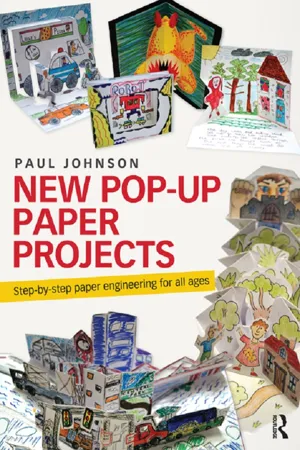
- 138 pages
- English
- ePUB (mobile friendly)
- Available on iOS & Android
About This Book
New Pop-Up Paper Projects is an inspirational book for everyone who wants to learn and share the magic of pop-up paper engineering. Illustrated throughout with colour diagrams and photographs, this book guides you through basic techniques and foundation skills, offers advice on classroom planning and health and safety and shows you how to ensure that learners of all ages can develop and progress their skills.
Guiding you through 90-, 180- and 360-degree engineering, this book presents step-by-step instructions and ideas for over 200 cross-curricular themes, from cityscapes to magical creatures. Aiming to challenge and inspire, Paul Johnson uses over 150 paper-engineering techniques, including:
-
- storybooks
-
- pop-ups without folds
-
- zigzag pop-ups
-
- pulleys, wheels and levers
-
- asymmetrical pop-ups
-
- intricate toy theatres
-
- diagonal pop-ups with movables.
This book, brimming with pop-up techniques and how to teach them, is for everyone – from the self-styled 'visually illiterate' to the art graduate, from parents keeping creativity alive at home to classroom teachers planning an engaging curriculum for their class of 30 plus pupils.
Frequently asked questions
Information


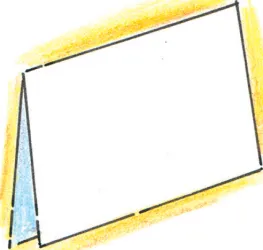
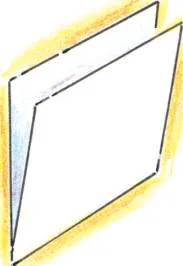
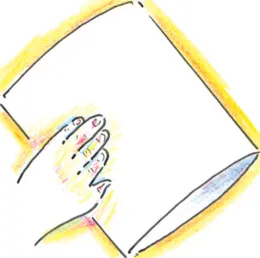

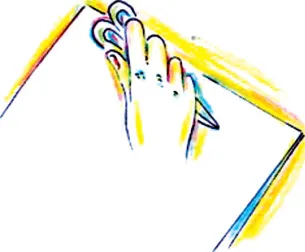
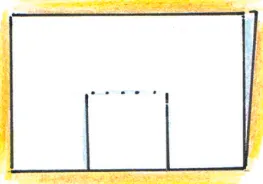



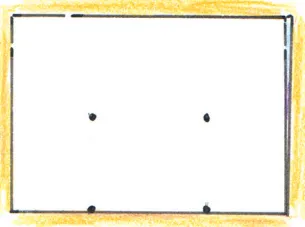
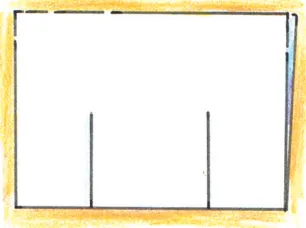

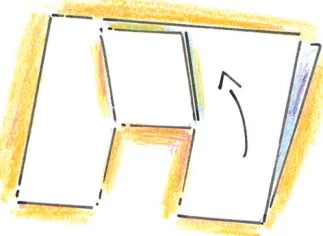
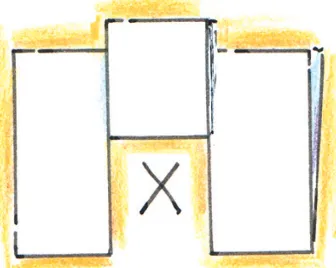
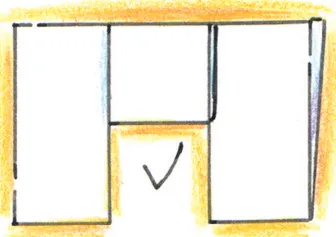

Table of contents
- Cover
- Half Title
- Title Page
- Copyright Page
- Table of Contents
- Thematic contents
- Dedication
- Acknowledgements
- Introduction
- 1. Making 90-degree pop-ups
- 2. Vertical boxes
- 3. Horizontal boxes
- 4. Angled pop-ups
- 5. Angled pop-ups with additions
- 6. Geometric pop-ups
- 7. Asymmetrical pop-ups:Vertical
- 8. Asymmetrical pop-ups: Horizontal
- 9. Story books
- 10. Hanging pop-up books
- 11. Making 180-degree pop-ups
- 12. Magic rainbows
- 13. More magic rainbows
- 14. Combining pop-ups
- 15. Zigzag pop-ups
- 16. Projected pop-ups
- 17. All creatures great and small
- 18. Houses
- 19. Cubes and pyramids
- 20. Constructing with boxes
- 21. Cars, boats and planes
- 22. Pop-up pictures
- 23. Diagonal pop-ups
- 24. Diagonal pop-ups with movables
- 25. Bracketed diagonal pop-ups
- 26. Single sheet 180-degree pop-ups
- 27. Pop-ups without folds
- 28. Paper mechanics
- 29. Star books
- 30. Tunnel books
- 31. Carousel books
- 32. Visual stories
- 33. Making books
- Templates